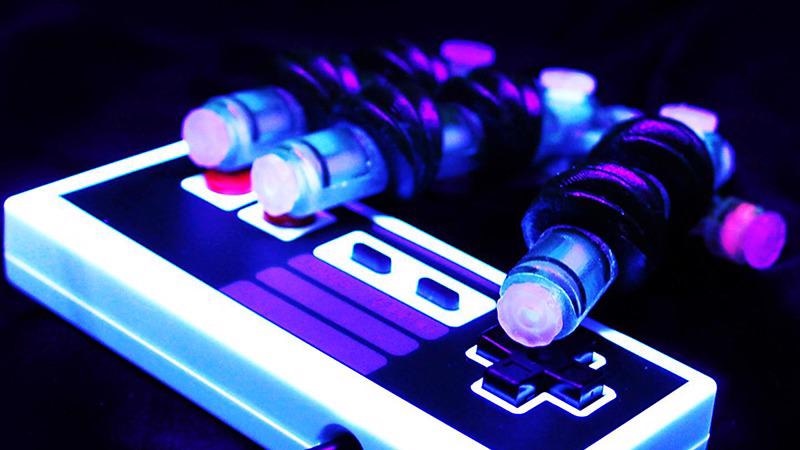Reviewed by Alex SmithSep 7 2021
World 1-1 is considered to be the most iconic opening in the history of video games. It is a perfect example of Super Mario Bros.’ pure and simple ingredients, and its tight yet pleasing gameplay — run, jump, smash and squash.
 The soft robotic hand beat the first level of Super Mario Bros thanks to integrated fluidic transistors and an autonomous program. Image Credit: University of Maryland.
The soft robotic hand beat the first level of Super Mario Bros thanks to integrated fluidic transistors and an autonomous program. Image Credit: University of Maryland.
Being the first entry in the astronomically successful Super Mario franchise, the game carries something far greater compared to the cult status. It was the top-selling video game ever for around three decades and has been serving as a basis for innumerable world-record “speedrun” attempts.
After 36 years of its release, a new player has joined the fun at present. A research group from the University of Maryland has developed a 3D-printed soft robotic hand that is sufficiently dexterous to play World 1-1 — and win.
Power-Up
The target of the field of soft robotics is to create new kinds of flexible, inflatable robots powered by air or water instead of electricity. Their intrinsic safety and adaptability imply that they could be ideally suited for prosthetic or biomedical devices. However, regulating the fluids that make them move has conventionally been a challenge.
Under the guidance of Ryan D Sochol, a mechanical engineer, the team worked on a new project and was able to address that problem by 3D printing completely assembled soft robots with integrated fluidic circuits in one step. The method was made viable with the help of Polyjet 3D printing, which has the ability to print layers of various multi-material “inks” on top of each other to make diverse material properties throughout an object.
Previously, each finger of a soft robotic hand would typically need its own control line, which can limit portability and usefulness. But by 3D printing the soft robotic hand with our integrated fluidic transistors, it can play Nintendo based on just one pressure input.
Joshua Hubbard, Study Co-First Author, University of California
An integrated fluidic circuit was developed by the researchers that enabled the hand to function in response to the power of single control pressure. When low pressure is applied, the first finger presses the controller to make Mario walk, for instance. High pressure presses the button to make Mario jump.
The robotic hand is driven by a program that independently switches between off, low, medium and high pressures, thus being able to complete the first level in less than 90 seconds.
Next Level
The illustration of the video is fun and eye-catching, but far from frivolous. The researchers took a decision to validate their plan by crossing the first level due to the fixed timing and level design of the game, and also because a single mistake can result in an instant “game over.” Playing Mario offers a specially challenging approach to assessing the performance of the soft robot.
The scientists are examining the use of their method for biomedical applications such as customizable prosthetics, surgical tools and rehabilitation devices. They have also made the work open-source, with the paper and design files available to anyone online.
We are freely sharing all of our design files so that anyone can readily download, modify on demand, and 3D print—whether with their own printer or through a printing service like us—all of the soft robots and fluidic circuit elements from our work.
Ryan D Sochol, Mechanical Engineer, University of Maryland
“It is our hope that this open-source 3D-printing strategy will broaden accessibility, dissemination, reproducibility, and adoption of soft robots with integrated fluidic circuits and, in turn, accelerate advancement in the field,” added Sochol.